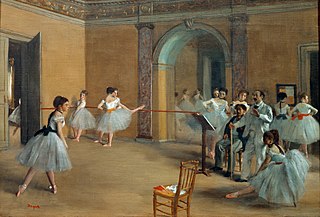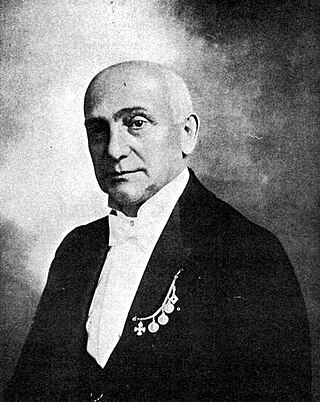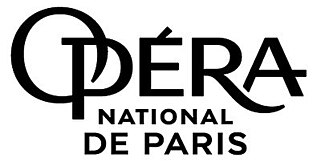
The performing arts are arts such as music, dance, and drama which are performed for an audience. They are different from the visual arts, which involve the use of paint, canvas or various materials to create physical or static art objects. Performing arts include a range of disciplines which are performed in front of a live audience, including theatre, music, and dance.

Ballet is a type of performance dance that originated during the Italian Renaissance in the fifteenth century and later developed into a concert dance form in France and Russia. It has since become a widespread and highly technical form of dance with its own vocabulary. Ballet has been influential globally and has defined the foundational techniques which are used in many other dance genres and cultures. Various schools around the world have incorporated their own cultures. As a result, ballet has evolved in distinct ways.
The Cecchetti method is variously defined as a style of ballet and as a ballet training method devised by the Italian ballet master Enrico Cecchetti (1850–1928). The training method seeks to develop essential skills in dancers as well as strength and elasticity. Cecchetti-trained dancers are commonly found in ballet and other dance companies throughout the world.

The intermedio, in the Italian Renaissance, was a theatrical performance or spectacle with music and often dance, which was performed between the acts of a play to celebrate special occasions in Italian courts. It was one of the important precursors to opera, and an influence on other forms like the English court masque. Weddings in ruling families and similar state occasions were the usual occasion for the most lavish intermedi, in cities such as Florence and Ferrara. Some of the best documentation of intermedi comes from weddings of the House of Medici, in particular the 1589 Medici wedding, which featured what was undoubtedly both the most spectacular set of intermedi, and the best known, thanks to no fewer than 18 contemporary published festival books and sets of prints that were financed by the Grand Duke.
Ballet de cour is the name given to ballets performed in the 16th and 17th centuries at courts.

Classical ballet is any of the traditional, formal styles of ballet that exclusively employ classical ballet technique. It is known for its aesthetics and rigorous technique, its flowing, precise movements, and its ethereal qualities.
In the French courts during the 17th Century, ballet first begins to flourish with the help of several important men: King Louis XIV, Jean-Baptiste Lully, Pierre Beauchamps, and Molière. The combination of different talents and passions of these four men shaped ballet to what it is today.
Comic ballet is a subcategory of narrative ballet, and denotes a dramatic work of a light or comic nature. Catherine d'Medici enjoyed the Italian custom of staging entertainments where classical or allegorical legends were retold through music and dancing, and she introduced this custom to France. It was Catherine's court festival director, Baltazarini da Belgiojoso who staged and choreographed the 'Ballet Comique de la Reine'. This ballet was presented at the Petit Bourbon on 15 October 1581, and related the story of Circe.

Enrico Cecchetti was an Italian ballet dancer, mime, and founder of the Cecchetti method. The son of two dancers from Civitanova Marche, he was born in the costuming room of the Teatro Tordinona in Rome. After an illustrious career as a dancer in Europe, he went to dance for the Imperial Ballet in St. Petersburg, Russia, where he further honed his skills. Cecchetti was praised for his agility and strength in his performances, as well as his technical abilities in dance. By 1888, he was widely accepted as the greatest ballet virtuoso in the world.

The Paris Opera is the primary opera and ballet company of France. It was founded in 1669 by Louis XIV as the Académie d'Opéra, and shortly thereafter was placed under the leadership of Jean-Baptiste Lully and officially renamed the Académie Royale de Musique, but continued to be known more simply as the Opéra. Classical ballet as it is known today arose within the Paris Opera as the Paris Opera Ballet and has remained an integral and important part of the company. Currently called the Opéra national de Paris, it mainly produces operas at its modern 2,723-seat theatre Opéra Bastille which opened in 1989, and ballets and some classical operas at the older 1,979-seat Palais Garnier which opened in 1875. Small scale and contemporary works are also staged in the 500-seat Amphitheatre under the Opéra Bastille.

The Ballet Comique de la Reine was an elaborate court spectacle performed on October 15, 1581, during the reign of Henry III of France, in the large hall of the Hôtel de Bourbon, adjacent to the Louvre Palace in Paris. It is often referred to as the first ballet de cour.

Balthasar de Beaujoyeulx, originally Baldassare daBelgiojoso was an Italian violinist, composer, and choreographer.

The art form known as opera originated in Italy in the sixteenth and seventeenth centuries, though it drew upon older traditions of medieval and Renaissance courtly entertainment. The word opera, meaning "work" in Italian, was first used in the modern musical and theatrical sense in 1639 and soon spread to the other European languages. The earliest operas were modest productions compared to other Renaissance forms of sung drama, but they soon became more lavish and took on the spectacular stagings of the earlier genre known as intermedio.

Ballet is a formalized dance form with its origins in the Italian Renaissance courts of 15th and 16th centuries. Ballet spread from Italy to France with the help of Catherine de' Medici, where ballet developed even further under her aristocratic influence. An early example of Catherine's development of ballet is through 'Le Paradis d' Amour', a piece of work presented at the wedding of her daughter Marguerite de Valois to Henry of Navarre. Aristocratic money was responsible for the initial stages of development in 'court ballet', as it was royal money that dictated the ideas, literature and music used in ballets that were created to primarily entertain the aristocrats of the time. The first formal 'court ballet' ever recognized was staged in 1573, 'Ballet des Polonais'. In true form of royal entertainment, 'Ballet des Polonais' was commissioned by Catherine de' Medici to honor the Polish ambassadors who were visiting Paris upon the accession of Henry of Anjou to the throne of Poland. In 1581, Catherine de' Medici commissioned another court ballet, Ballet Comique de la Reine, however it was her compatriot, Balthasar de Beaujoyeulx, who organized the ballet. Catherine de' Medici and Balthasar de Beaujoyeulx were responsible for presenting the first court ballet ever to apply the principles of Baif's Academie, by integrating poetry, dance, music and set design to convey a unified dramatic storyline. Moreover, the early organization and development of 'court ballet' was funded by, influenced by and produced by the aristocrats of the time, fulfilling both their personal entertainment and political propaganda needs.

A series of lavish and spectacular court entertainments, sometimes called magnificences, were laid on by Catherine de' Medici, the queen consort of France from 1547 to 1559 and queen mother from 1559 until her death in 1589. As wife of Henry II of France, Catherine showed interest in the arts and theatre, but it was not until she attained real political and financial power as queen mother that she began the series of tournaments and entertainments that dazzled her contemporaries and continue to fascinate scholars. Biographer Leonie Frieda suggests that "Catherine, more than anyone, inaugurated the fantastic entertainments for which later French monarchs also became renowned".

Catherine de' Medici was a patron of the arts made a significant contribution to the French Renaissance. Catherine was inspired by the example of her father-in-law, King Francis I of France, who had hosted the leading artists of Europe at his court. As a young woman, she witnessed at first hand the artistic flowering stimulated by his patronage. As governor and regent of France, Catherine set out to imitate Francis's politics of magnificence. In an age of civil war and declining respect for the monarchy, she sought to bolster royal prestige through lavish cultural display.
British ballet is most recognised for two leading methods, those of the Royal Ballet School and the Royal Academy of Dance. The identifying characteristic of British ballet is the focus on clean, precise technique and purity of line that is free of exaggeration and mannerisms. The training of dancers in Britain is noted for its slow progression, with a great deal of attention paid to basic technique. British ballet methods operate on the principle that establishing correct technique and strength slowly makes it much easier for the student to adapt to more difficult vocabulary and techniques later on. The main difference between the two is that The Royal Ballet School trains professional dancers, the Royal Academy of Dance trains teachers.
Vincenzo Celli was an American ballet dancer, choreographer, and teacher. He was known as a performer and choreographer in Italy, and in the US as a teacher of the Cecchetti method of ballet training.

Violante Doria, also known as Yolande or Yolante, was an Italian soprano from Genoa. She was considered to be one of “the most successful musicians in France during the reigns of the last Valois kings.” She was married to bass singer Girard de Beaulieu who was a well-known and important singer of the royal court from as early as 1572 until the last year of his life in 1590.” The couple played a large role in the creation of the French ballet de cour, the Balet comique de la royne, in 1581. The successful careers of both Doria and her husband were an important part of structuring the music of the royal court and show the significance in the rise of chamber music.
Cyril W. Beaumont OBE was a British dance historian, critic, technical theorist, translator, bookseller, and publisher. Author of more than forty books on ballet, he is considered one of the most important dance historians of the twentieth century.











